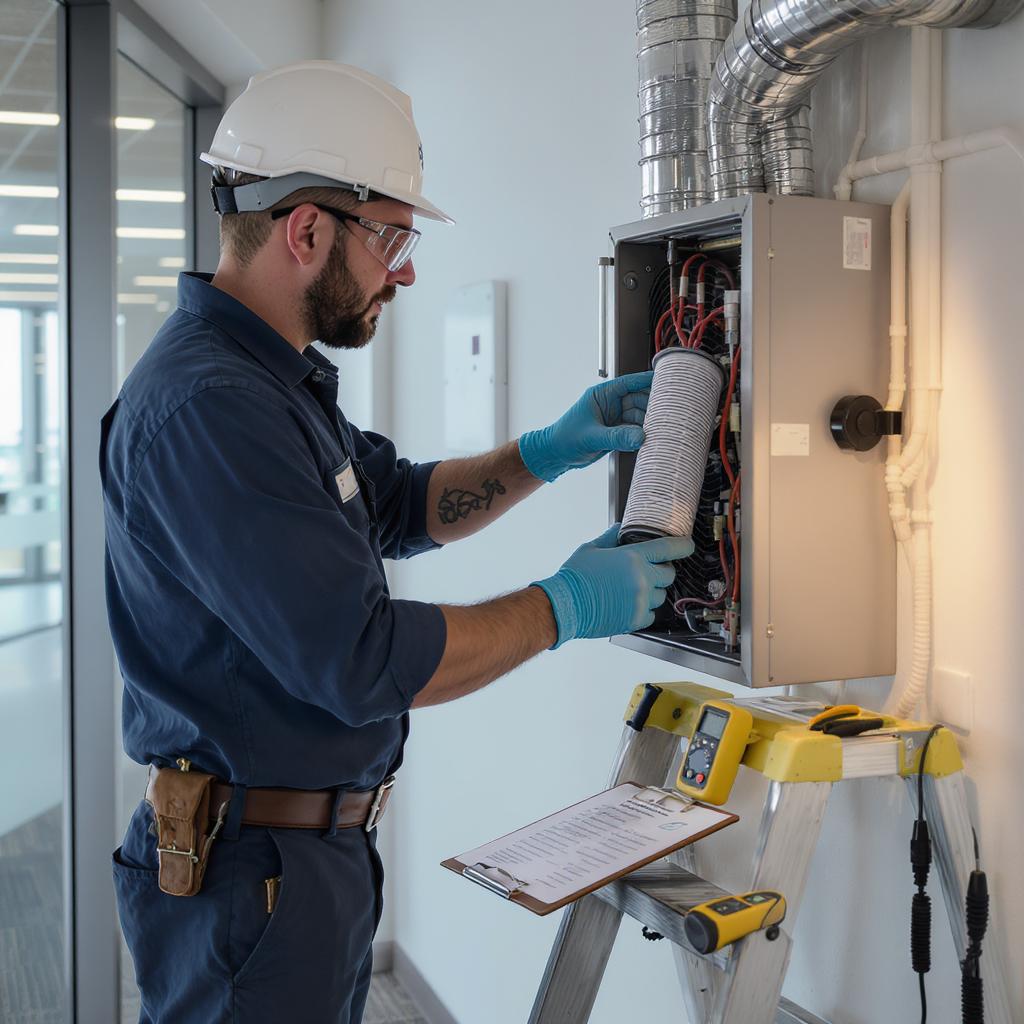
At Builder.Miami, we ensure your property’s safety and longevity with a disciplined maintenance program that begins with annual structural inspections, timely repairs, and systematic care of all key systems.
Key Benefits:
- Prevent costly failures and unexpected downtime
- Maintain compliance with building codes and safety standards
- Optimize energy efficiency, comfort, and occupant well-being
Core Maintenance Pillars:
- Structural & Safety Inspection: Annual checks of foundations, walls, columns and beams to detect cracks, moisture infiltration and material fatigue.
- Surface Repairs: Follow ACI guidelines for patching cracks, spalling concrete and rust mitigation; include sealant and coating renewals.
- HVAC Care: Replace air filters quarterly, schedule biannual professional tune-ups, and inspect ducts and coils for leaks, debris and optimal airflow.
- Electrical System Checks: Perform annual panel inspections, monthly emergency lighting tests and upgrade to ENERGY STAR® LED fixtures to cut energy use and maintenance needs.
- Plumbing Upkeep: Conduct leak inspections every six months, flush water heaters annually and maintain gutters, downspouts and grading to prevent water intrusion.
- Roof & Exterior Envelope: Inspect pre- and post-storm, clean gutters quarterly and reseal flashings, joints and caulking to keep the building watertight.
- Documentation & Tracking: Keep detailed logs of all inspections, repairs, permits and warranties in a digital system with automated alerts and reporting.
- Sustainability & Upgrades: Choose low-VOC paints, recycled aggregates and renewable materials, monitor energy and water use monthly, and plan periodic efficiency improvements.
Digital tracking transforms maintenance into an automated workflow: real-time reminders, prioritized work orders and clear communication among contractors, engineers and facility managers, all stored in a secure cloud.
Background & Extra Tips:
- Store electronic records and backups of physical files to simplify audits and emergency responses.
- Review and update schedules annually to stay aligned with evolving local codes and industry best practices.
- Use the inverted-pyramid approach in documentation: lead with top-level priorities, follow with supporting details, then add background or examples.
- Incorporate eco-friendly materials and data-driven tracking to reduce costs and support sustainability goals.
